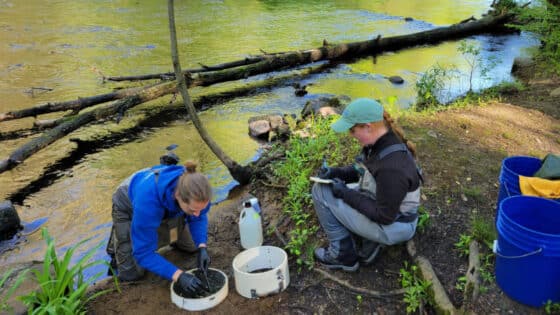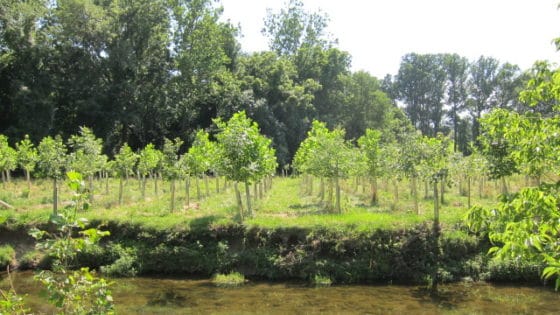FOR IMMEDIATE RELEASE: June 11, 2004
WHAT: Federal Monies Available to Landowners for Planting Native Trees & Shrubs
WHEN: Available Now
WHERE: Along Streams in the Red and White Clay Watersheds and the Tulpehocken Watershed
Avondale, Pa. – Scientific research at the Stroud Water Research Center has shown that planting trees along small streams is very effective at improving water quality. The Center currently has a grant that enables it to offer free technical assistance to landowners in the Red and White Clay Watersheds, as well as the Tulpehocken Watershed. These landowners will want to help improve the creeks on their properties and help restore water quality in the region.
The greatest challenge to water quality is excess nutrient and sediment runoff. Forested stream buffers are the most effective tools for removing nutrient and sediment pollution from stormwater runoff.
A Riparian Buffer Consultant from the Stroud Water Research Center will create a Riparian Buffer Management Plan for interested landowners at no cost. This plan will give the landowner all the information required to plant and manage a riparian buffer. A variety of native trees and shrubs will be specified for planting. Additionally, the consultant will be available to address any questions that may arise over time concerning the management of the buffer. Once the plan has been completed, the landowner will be eligible for cost share assistance from the federal government to install the buffer. Funding is also available for fencing to exclude livestock from the stream, streambank crossings for livestock and equipment access, as well as for streambank restoration. In order to be eligible for this assistance, the landowner must have a stream on their property in one of these Watersheds that is not forested. The property may be commercial or residential.
The goal of this program is to restore fifty stream miles of riparian buffers in the Red and White Clay Watersheds and twenty-five stream miles of riparian buffers in the Tulpehocken watershed.



